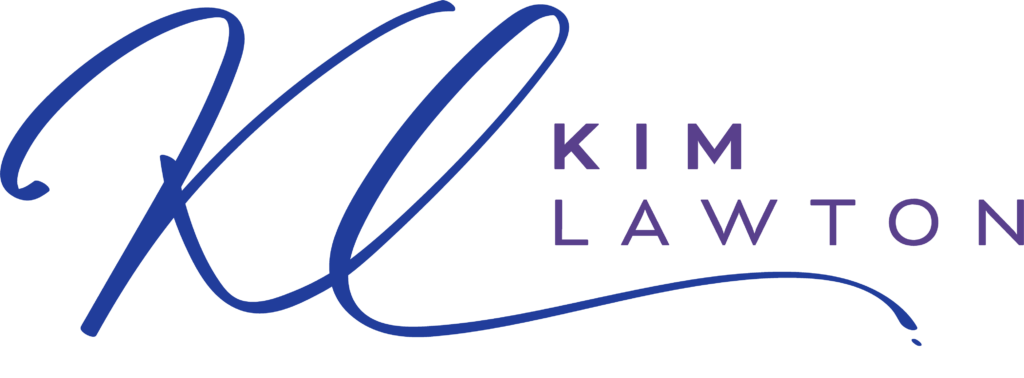How can you actually boost your social media engagement? What are some simple ways to increase engagement on your posts? How do you get people to interact with your content on social media?
The digital landscape has changed. Clever ads and sleek websites are no longer enough. Today’s audience values authenticity, not promotion. The most effective way to build trust and stand out is by turning social media into a classroom. Educational content cuts through the noise, offers real value, and builds genuine connections.
This approach works because it empowers audiences. Instead of broadcasting messages, brands can teach, simplify complex ideas, and spark conversations. Educational content—delivered through carousels, videos, or live sessions—drives lasting engagement and creates loyal communities that grow organically.
To succeed online, it used to be enough to have a clever ad on socials or a sleek website. Now, the market is saturated with noise, and consumers are savvier than ever. They’ve grown tired of the hard sell and the promotional spectacle. They want real value, truth, and genuine connection.
Your website and content might look great, but it’s just not enough for today’s consumers.
The new best practice is this: The most valuable content you can create is educational.
Your social media platforms are no longer just places to announce new products and drive sales; they’re your most accessible, powerful classrooms to reach people at great scale. This simple pivot is the key to unlocking consistent and lasting audience attention. This blog will walk you through how to improve your marketing operations and use social media to educate your audience and also teach you how to boost social media engagement across your platforms.
Why Educational Content Drives Engagement
For too long, brands have viewed social media as a megaphone for shouting messages at an audience. But that’s not what these platforms are for, and that strategy really doesn’t work anymore. Instead, these platforms were designed for connection, conversation, and community. Educational content taps into these deeper needs.
When you teach, you’re giving your audience a gift: knowledge they can use to solve problems, improve their lives, or advance their career. This act of giving establishes a powerful foundation of trust that traditional advertising can’t match.
Think about a time you followed a brand because they consistently taught you something new. You didn’t just passively consume the content; you probably saved the post, shared it with a friend, and came back for more to see what else they had to offer. This organic, voluntary interaction—the kind where the audience feels empowered—is the purest form of long-term engagement. Your content becomes more than just memorable, but genuinely valuable.
Understanding What Your Audience Wants to Learn
To successfully use social media to educate, you must first know what your audience wants to learn. If you launch a masterclass that no one signs up for, it doesn’t matter how brilliant the material is. Your strategies always need to be audience-centric if they’re actually going to work.
The first step is researching common pain points and questions your audience has. Where are your customers getting stuck? Where could your product jump in to help?
These are my three go-to tips for researching your audience and learning how to boost social media engagement:
- Listen to Feedback: Scour your customer service transcripts, DMs, email replies, and comment sections. The most common questions you receive are your content goldmine.
- Analyze Search Trends: Use tools to see what questions related to your niche are actively being searched on Google and platform-specific search engines, like YouTube and TikTok.
- Observe Peer Discussions: Look at Reddit, LinkedIn groups, and private communities where your audience gathers. What are they complaining about? What are they celebrating? Is there anything you can do to help?
It’s also important to understand different learning preferences to tailor your approach. Does your audience prefer a quick, actionable checklist or a deep-dive interview? Do they need a video explainer, or would they prefer written text? Your goal is to find creative ways to tailor your approach to meet your business goals and your audience’s needs. The best educational marketing approach is one where both you and the audience benefit in some way.
Choosing the Right Educational Formats
Educational content doesn’t have to be a dense PDF. In fact, on social media, the most effective learning moments are often the most concise and visually exciting.
- Carousels: These are great for breaking down complex topics into clear, digestible steps. They provide immense value in a highly shareable, swipeable format. Use clear headings and strong visuals to guide the reader through a lesson, framework, or checklist. Your audience is far more likely to engage with the content this way, rather than if it were all in a large wall of text.
- Short-Form Video (Reels/TikTok/Shorts): These formats are ideal for delivering quick, actionable tips or explaining a single concept with high energy and personality. Short-term video is often the go-to strategy for increasing reach quickly.
- Infographics & Single Visuals: Use these to simplify data, showcase statistics, or illustrate a complex process. The visual clarity aids memory retention and encourages saves and shares.
- Live Sessions & Webinars: Perfect for deep-dive teaching, Q&A sessions, and demonstrating expertise in real-time. Live content builds a unique sense of community and allows you to directly answer pressing questions and hold conversations with your audience members.
The emphasis here is on shareability and digestibility. If the audience has to work hard to understand or apply the lesson, they won’t engage. The most successful content is engineered to be understood quickly and passed on easily. This strategic choice of format is paramount in learning how to boost social media engagement organically and actually offer your consumers value.
Simplifying Complex Information
You are the expert, and your audience relies on you to cut through the jargon and confusion in your industry to teach them something worthwhile. But always remember, the goal of educational content is to make the audience feel smarter and more capable, not intimidated.
The best method for tackling complexity is to use clarity and simplicity. Take that complex topic, whatever it may be, and break it down into three to five core, practical insights following these tips:
- Use Plain Language: Ditch the industry jargon and acronyms unless you immediately define them. Speak to your audience as you would a friend who needs a clear explanation on the topic. Don’t preach or placate; speak to them with intention.
- Leverage Visuals and Analogies: Use simple charts, clear diagrams, and relatable stories to illustrate abstract concepts. You have to give your audience something real to connect with.
- Storytelling: People remember stories much better than facts. We’ve talked about this before: sharing a moment of vulnerability or a failure you learned from makes the lesson stick. It adds the essential human element required not only to educate your audience but also to boost engagement.
Clarity directly correlates with retention and sharing. When a lesson is simple to grasp, the audience is more likely to apply it and more likely to share it with their own network, increasing your organic reach.
Encouraging Two-Way Interaction
Educational content shouldn’t be a lecture; it should be a conversation. The most effective way to guarantee learning and dramatically boost social media engagement is by empowering your audience to participate.
Interaction deepens learning because it forces them to think, apply the knowledge, and voice their own perspective, adding to the broader discussion.
- Use Interactive Tools: Integrate polls, quizzes, and other interactive tools into your stories and posts. This gives people an instant, low-friction way to participate.
- Ask Thoughtful Questions: Don’t just ask, “What do you think?” Ask targeted, open-ended questions that require application: “Based on this framework, what is the first step you will take in your business this week?” Give the audience a bit of homework to keep them engaged.
- Make Them Feel Heard: Acknowledge and reply to comments thoughtfully. When someone shares their challenge or insight, validate it. This shows your audience that your brand values their input and that the learning process is mutual. This is the type of community building that’s sustainable long-term.
Remember, the moment your audience feels involved, the relationship strengthens. This level of personalized, authentic back-and-forth is central to any strategy for boosting social media engagement.
Measuring Engagement and Improving Content
You can’t manage what you don’t measure. In the realm of educational content, success isn’t just about follower count; it’s about the depth of the interaction.
- Track Deep Engagement Metrics: Pay close attention to metrics that signal learning and value. These are saves, shares, and watch time/dwell time. Saves show the audience views the content as a valuable resource; shares show they are actively advocating for your brand.
- Analyze Feedback and Sentiment: Read your comments for qualitative insights. Are people saying, “I needed this,” or “This changed my perspective”? Use this positive feedback to understand what topics resonate most. If a post underperforms, don’t discard the topic; test a different format or angle. In some cases, it may be a dud, but it’s also possible that you need to alter your approach.
- Test and Adapt: Run A/B tests on different formats for the same core lesson. Does a written list perform better than a video? Does a colorful infographic get more shares than a simple text post? Use this data to continually refine your approach and ensure your content remains relevant and effective.
This disciplined data approach turns your marketing operations into a continuous learning loop. It ensures that your efforts to boost social media engagement and educate your audience are always focused on delivering the highest possible value.
Creating Sustainable Educational Content Strategies
Consistency is the ultimate trust builder. If you only publish educational content sporadically, you lose momentum and dilute your reputation as a reliable resource. Sustainable content creation is anchored in planning and efficiency. You have to show up consistently to prove your reliability to your audience.
- Plan and Batch Content: Once you’ve identified your audience’s core learning needs, create a calendar. Dedicated time blocks for batching content, like recording all videos in one session, dramatically increase output and maintain a high bar for quality.
- Repurpose Long-Form Insights: Your deep-dive expertise doesn’t have to live in just one place. Take a single, comprehensive blog post or white paper and break it down into dozens of social assets, breaking up the longer content into bite-sized pieces, like carousels and TikToks.
This strategy allows you to maintain consistency without constantly creating new ideas from scratch. By regularly reinforcing your core lessons across channels, you solidify your position as the expert, which is the most reliable way to boost social media engagement long-term.
Conclusion: Building an Educated and Engaged Community
The most successful brands of this era are those that prioritize their audience’s education over their own sales targets. When you commit to teaching through social media, rather than just selling, you’re making an investment in a different kind of relationship, one built on mutual respect and shared growth.
This is the essence of how to boost social media engagement authentically. It’s not about finding the perfect viral hack; it’s about showing up consistently and delivering genuine value that helps your audience in some way. Listen to what they ask, adapt to how they learn, and always use your expertise to shine a light on their path. By delivering this consistent value, you don’t just gain followers; you foster a dedicated, educated community ready to advocate for your brand.




